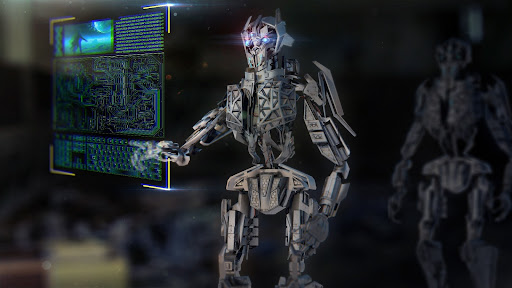As digital transformation continues to shape our world, we are witnessing a surge in data breaches. Despite the best efforts of skilled professionals working tirelessly to enhance online security, the threats posed by phishers, hackers, scammers, and extortionists are becoming increasingly severe. For instance, in early 2022, global cyberattacks reached unprecedented levels, experiencing a worrying over 40% increase compared to the previous year. Notably, ransomware has emerged as a major menace across the globe, prompting its recognition as a state-level weapon by mid-2022. Research suggests that traditional cybersecurity measures often fall short against this new wave of cyber threats. So, how can artificial intelligence (AI) help strengthen areas like incident response, malware detection, and more? Let’s dive into the world of AI-driven cybersecurity.
How Can AI Help Cybersecurity?
With the increasing frequency of cyberattacks, especially in the aftermath of the pandemic, it’s high time for businesses to embrace AI-powered tools. These ingenious software solutions aid business owners in safeguarding themselves by preemptively detecting and thwarting potential threats.
Advice! Artificial intelligence should not be one measure of protection, but more familiar cybersecurity tactics should also be used. This includes two-factor authentication, password management, and the use of trusted VPNs such as VeePN. With the help of a VPN, you can even Google Play change country or bypass the ban in Omegle. Apart from cyber security, it has many more uses.
The concept revolves around businesses utilizing AI-enabled software to complement human expertise. These tools excel at identifying vulnerabilities, identifying new types of malicious activities, and promptly notifying about hacking attempts.
For instance, AI-powered threat detection. If the system detects an unprecedented action, it promptly raises an alarm and informs you, allowing you to scrutinize it for malicious intent. Another example is that VPNs use AI to intelligently route traffic. If you set up a VPN extension Edge, you can even get a speed boost, and not a speed drop, as it was before. This proactive approach empowers you to secure your systems instead of merely waiting for an actual attack to occur.
Main Functions of AI
AI serves as a powerful tool in the battle against cyberattacks, performing three key functions: 1. Anomaly Prediction: AI predicts potential cyber threats by analyzing data and identifying patterns. Organizations adopt this technology to identify vulnerabilities in their systems and strengthen their defenses. 2. Anomaly Detection: AI helps spot irregularities in networks, websites, or applications and notifies users to investigate further and take necessary measures. By 2022, it is expected that at least 50% of businesses will have adopted AI for this purpose. 3. Attack Response: AI not only predicts and detects threats but also actively fights against them in real time. Organizations can program AI software to identify and eliminate threats without human intervention. AI can automatically develop virtual patches and other protective measures to counter threats.
Where is AI Can Enhance Cybersecurity in the Future?
There are numerous ways to apply AI to enhance cybersecurity. Some AI applications are already being utilized in both cybersecurity and various business domains, while others are currently undergoing testing or development. Let’s take a closer look at the most prevalent AI applications in the field of cybersecurity today:
- AI-Based Intrusion Detection Systems (IDS): This AI facet can detect potential threats. AI is strong at analyzing large amounts of data and it is not difficult for it to see anomalies in the network. Similar to humans, AI needs to understand what is considered normal within the system to identify abnormalities.
- AIOps Platforms: These AI systems use complex algorithms to analyze large volumes of data. The goal is to predict and prevent threats before they occur. This is a step ahead because the IT department will be able to detect a vulnerability or attack even before it goes into the active phase.
- Machine Learning-Assisted Malware Analysis: AI is involved in the creation of tools for finding infected code. Again, the analysis of huge amounts of data is the main advantage of AI. This technology is already used in Google Play, where the robot checks the security of the application. Another example, is AI can scan incoming emails and prevent phishing threats.
- Machine Learning-Assisted Hacking Tools: This AI facet contributes to the development of well-known hacking tools in the market. One notable example is the machine learning-assisted malware analysis mentioned earlier. However, it also opens doors for cybercriminals to create more sophisticated tools for their attacks.
Conclusion
The cybersecurity industry needs to evolve rapidly to counter the increasing and escalating cyberattacks. It’s evident that AI is the future of cybersecurity. The flip side is that cybercriminals also use AI. Hence the conclusion, AI is just a tool and its results will depend on the hands in which it is located. Therefore, organizations must stay updated with technological advancements in the AI domain to combat cyber threats and protect their systems.






